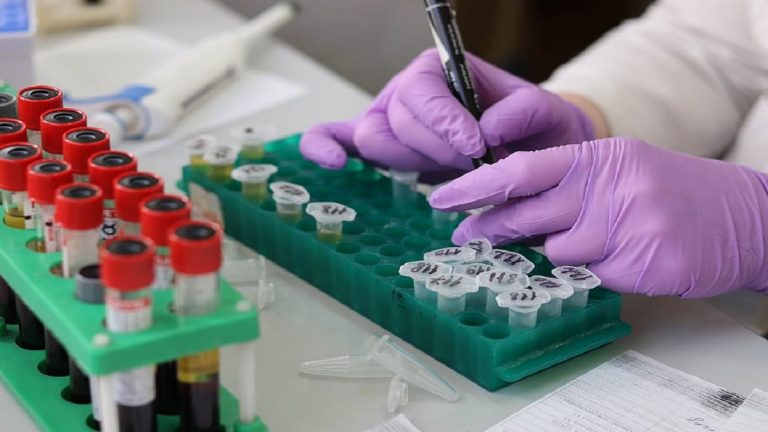Jaundice or icterus is defined as the yellowish pigmentation of skin and mucous membranes especially conjunctiva and sclera, as a consequence of increased blood bilirubin level.
There are two forms of bilirubin in the blood circulation, which are direct or conjugated and indirect or unconjugated bilirubin. The increase of any one of them result in increased the total bilirubin level, which cause the yellowish color of skin.
Normally total bilirubin level in adult animals is below 1 mg/dl,
Jaundice occurs when the total bilirubin level become above 3 mg/dl.
Under normal physiological conditions, bilirubin is formed from the normal breakdown of aged erythrocytes by the reticuloendothelial cells, which leads to the formation of biliverdin. The latter is transferred in the blood binding to albumin. The combination of albumin and biliverdin is called indirect bilirubin. Increase breakdown of RBCS as in hemolytic anemia results in increased blood biliverdin level and subsequently high blood indirect bilirubin level.
Indirect bilirubin is removed from the blood by the liver, where indirect bilirubin is conjugated with glucuronic acid, hence it name is changed from indirect bilirubin to direct bilirubin (Conjugated). Direct bilirubin pass from the hepatocytes to the bile canaliculi, and then to the main bile duct and finally to the small intestine.
In the small intestine, direct bilirubin is converted to stercobilinogen by the action of bacteria. There are three pass ways for the stercobilinogen; the first is by excreting it iin the feces, which give the brown color of feces. The second is by absorption through the portal circulation (Enterohepatic circulation, where direct bilirubin is returned to the blood. The third pass way is through the excretion of stercobilinogen in urine, and its name changed to urobilinogen.
Direct bilirubin is increased in the blood in case of obstruction of the main bile duct, intrahepatic cholestasis and in case of hepatitis.
What are the types of jaundice?
There are three types of Jaundice; pre-hepatic (Hemolytic), hepatic jaundice and post-hepatic (Obstructive) Jaundice.
What are the differences between different types of jaundice?
Prehepatic (Hemolytic) jaundice
Occurs in case of hemolytic anemia. Total bilirubin level is increased due to increased blood indirect bilirubin level. The color of urine remains normal, because indirect bilirubin is bind to albumin, and subsequently unable to pass the glomerular filter. Higher level of blood indirect bilirubin, results in higher bilirubin uptake by the liver and increased the rate of formation of direct bilirubin, and increased the direct bilirubin that pass to the small intestine. This results in dark brown color of the feces. The increased stercobilinogen level in the small intestine results in increase the formation of urobilinogen, which is excreted in urine. The most important changes in pre-hepatic jaundice are increased total and indirect bilirubin in blood, normal urine color, dark brown feces and increased urobilinogen in urine.
Hepatic jaundice
Occurs in case of hepatitis. Total bilirubin level increased due to increase of both direct and indirect bilirubin. Dark brown color of urine, as a result of excretion of direct bilirubin in urine. Normal color of feces Normal urobilinogen level
Post-hepatic (Obstructive) Jaundice
Occurs in case of obstruction of main bile duct. Total bilirubin increased due to increase blood direct bilirubin level. Dark brown color of urine. Clay color of feces Absence of urobilinogn from urine.




